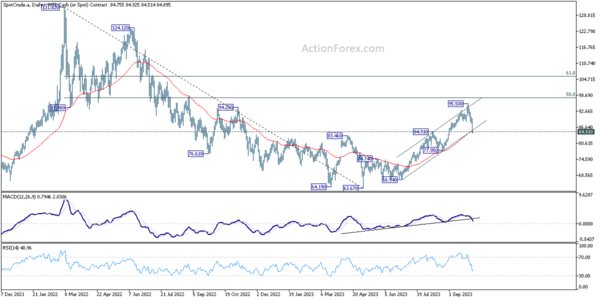Oil prices took a significant dip overnight, with WTI now trading USD 10 beneath last week’s peak of 95.50. This decline is notably perplexing given the absence of a clear triggering event. OPEC+’s resolution to uphold output cuts is conventionally a precursor for a bullish response in the market. However, the rapid and profound dip has spurred conversations around the onset of demand destruction, provoked by the Q3 oil price spike.
In this week’s meeting, the OPEC+ ministerial panel opted for status quo, maintaining its existing oil output policy. Saudi Arabia pledged to persist with its voluntary cut of 1 million barrels per day through the end of 2023, while Russia committed to retaining its voluntary export reduction of 300k bpd until December’s end.
A note from JPMorgan’s commodity analysts titled “Demand destruction has begun (again)” highlighted that the repercussions of surging oil prices are re-emerging in the form of demand restraints in regions including US, Europe, and certain Emerging Markets.
The crux of global oil demand growth, anchored by China and India, is also showing signs of waning. China’s decision to utilize domestic crude inventories following the surge in oil prices is indicative of this trend.
In the US, gasoline consumption has plummeted to a 22-year low. The considerable 30% hike in fuel prices in Q3 has reportedly dampened demand, leading to an atypical decline of 223k barrels per day.
From a technical standpoint, WTI crude oil finds itself at a pivotal support juncture, which comprises the 84.91 resistance-turned-support and the 55 D EMA, currently pegged at 84.90. While a solid rebound from this position remains plausible, it’s expected to be restrained well below 95.50 high.
On the other hand, sustained break of 84.91 would confirm rejection by 50% retracement of 131.82 to 63.67 at 97.74. WTI could then be reversing whole rally from May’s low at 63.67, and risk falling further to 77.95 support.














